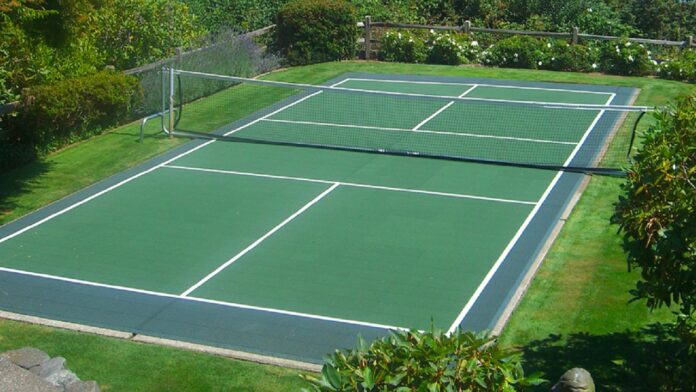When it comes to crafting a Backyard Pickleball Court that guarantees an enjoyable and competitive playing experience, two critical factors take center stage: ball rebound and flooring. Achieving the perfect balance between these elements not only ensures fair gameplay but also enhances the overall satisfaction of players and spectators alike.
Understanding the Importance of Ball Rebound
The ball rebound is a fundamental aspect of pickleball that significantly influences the pace and dynamics of the game. Whether you’re a seasoned player or new to the sport, you’ve likely experienced how a ball rebound can either elevate your shots or pose challenges. A well-designed pickleball court should offer consistent ball rebound across its entire surface.
In a Backyard Pickleball Court, achieving optimal ball rebound involves precise measurements and construction techniques. The ball’s bounce off the court must be predictable and uniform, preventing unexpected variations that could hinder player performance. Proper ball rebound ensures that players can anticipate and respond effectively to their opponent’s shots, enhancing the game’s strategic aspect.
The Role of Flooring in Ball Rebound
Flooring is a key contributor to achieving the desired ball rebound in a pickleball court. The choice of flooring material and its construction can greatly influence how the ball interacts with the surface. Concrete courts, while durable, might provide a higher and less controllable bounce, which can impact the game’s integrity. On the other hand, specialized pickleball court surfaces are designed to offer a consistent and moderate ball rebound, creating a level playing field for players of all skill levels.
Optimal Flooring Structure for Ball Rebound
A reliable Backyard Pickleball Court surface comprises multiple layers, each serving a specific purpose. The bottom layer, often referred to as the cushion or buffer layer, provides shock absorption. This layer is vital for player comfort and safety, reducing the impact on joints during play.
Above the cushion layer lies the structural layer, which ensures the court’s longevity and stability. This layer is designed to withstand regular gameplay and outdoor elements, maintaining the court’s integrity over time.
The surface layer, the topmost component, is pivotal for achieving consistent ball rebound. This layer features a specialized cross-shaped surface design that determines the ball’s bounce at every point on the court. The uniformity of this design guarantees that players can anticipate the ball’s behavior, enhancing the tactical dimension of the game.
Professional Installation for Optimal Performance
Achieving the perfect ball rebound and flooring characteristics requires professional installation expertise. A knowledgeable team will evaluate the site and prepare the ground before installing the court. This meticulous approach ensures that the court’s layers are aligned, leveled, and properly connected, resulting in a seamless and consistent playing surface.
Conclusion
In conclusion, a Backyard Pickleball Court that boasts exceptional ball rebound and flooring considerations elevates the playing experience for enthusiasts and athletes alike. The careful selection of flooring materials, coupled with precise construction techniques, guarantees a court that meets competitive standards and offers countless hours of fun, exercise, and camaraderie. So, if you’re aiming to create the ideal pickleball court in your backyard, prioritizing ball rebound and flooring integrity is an investment that promises significant returns in terms of game quality and player satisfaction.











